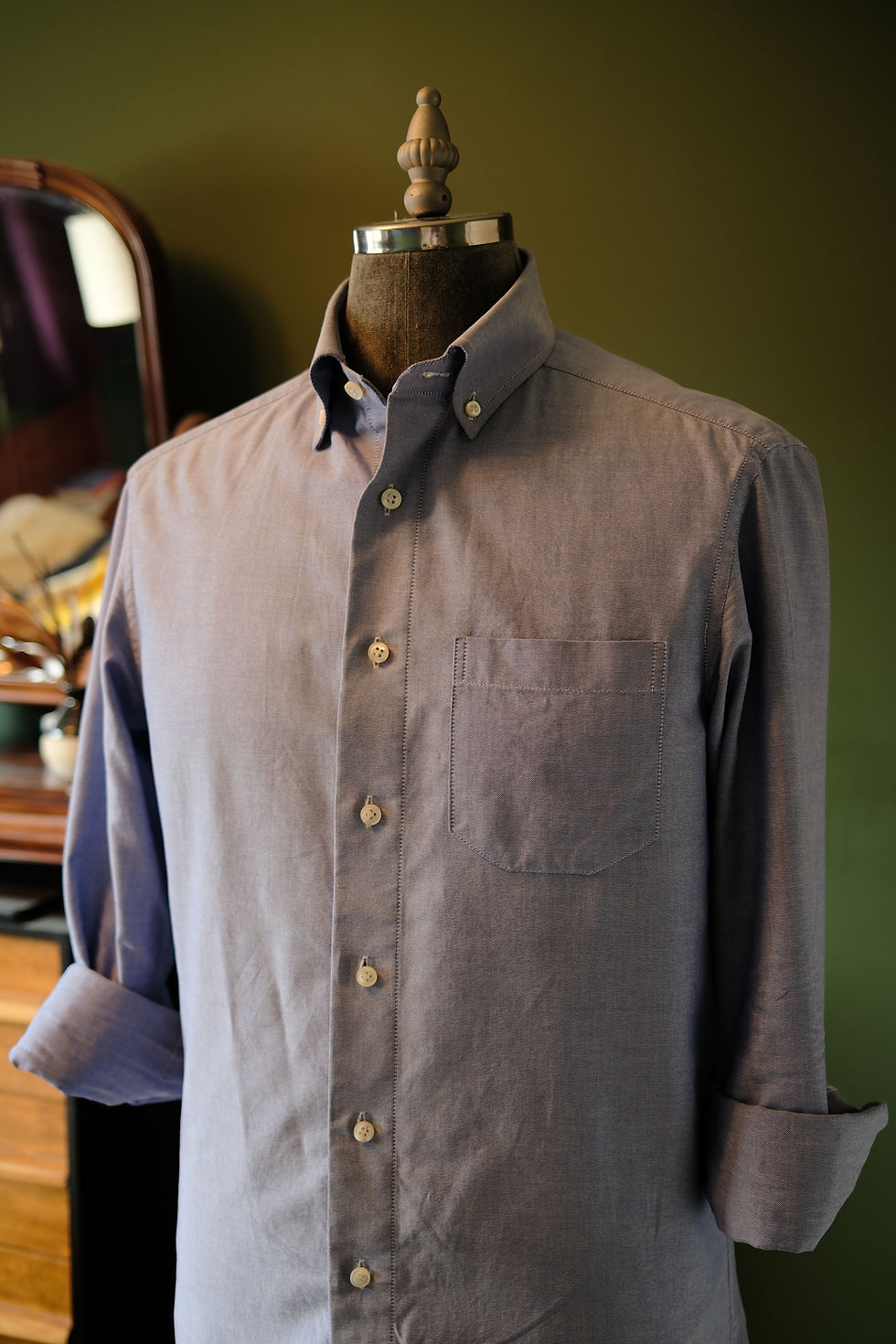Proper Suit Maintenance: A No-Nonsense Guide to Keeping Your Tailoring in Top Shape
- Allan Sinclair
- May 25
- 4 min read
Updated: Jun 15
A quality suit is a wardrobe essential—whether off-the-rack, made-to-measure, or fully bespoke. But what separates someone who simply owns a suit from someone who wears it well is how they care for it. Proper suit maintenance will preserve your suits structure, extend its life by years, and save you a small fortune in unnecessary dry cleaning bills.
This is your no-nonsense, expert-backed guide to maintaining your suit with the same care that went into making it.
🔁 1. Rotate Your Suits
Don't wear the same suit two days in a row.
Wearing a suit back-to-back doesn't give the fabric enough time to rest, dry out, and recover its shape. Excessive moisture from your body (especially at stress points like knees and armpits) can weaken the fabric and breed odour-causing bacteria.
Pro tip: If you wear suits regularly, aim for at least three in your rotation. Let each suit rest for 24–48 hours before wearing it again.
🧽 2. Spot Clean First, Dry Clean Last
Dry cleaning is not routine maintenance—it's a last resort.
Despite what the care label may say, most suits shouldn't be dry cleaned more than once or twice a year. The harsh solvents and pressing methods can weaken natural fibres and distort the tailored shape of bespoke garments.
Instead, spot clean:
Act quickly: The sooner you treat the stain, the better.
Use cold water, especially for wool and silk. Hot water can set stains.
Dab, don't rub: Gently blot stains to avoid damaging fibres.
Dish soap for grease: Just a dab lifts food-based stains.
Vinegar + lemon juice: Great for breaking down oils and deodorizing.
Vodka spray: Use undiluted vodka in a spray bottle to neutralize odours, especially in armpits or musty vintage pieces.
Let the suit air dry fully after spot cleaning.
🧼 3. Dry Cleaning: When You Have To
Only dry clean your suit when:
There's a stain you can't remove yourself.
There's an odour you can't eliminate.
The suit has visible dirt or grime.
Choose the right cleaner:
Avoid "dry stores" that outsource your garments.
Look for "package plants" that clean on-site.
Ask if pressing is done by hand or clamshell (avoid the latter for bespoke).
Communicate any preferences (e.g., no sizing, no crease on lapels).
Also, ask about the chemicals they use—eco-friendly or hydrocarbon-based methods are gentler than traditional perchloroethylene (perc).
🪡 4. Hang It Properly
One of the easiest ways to ruin a suit is by hanging it on the wrong hanger.
Do:
Use wide wooden hangers with curved shoulders.
Choose ones with a trouser bar (ideally non-slip).
Match hangers to your jacket's shoulder width.
Don't:
Use wire or shirt hangers.
Leave items in pockets—this will distort the fabric.
Cram your suit into a packed closet. Give it breathing space.
💨 5. Steam, Don't Iron
Avoid ironing your suit directly—this can scorch fabric or leave shiny spots.
Instead:
Use a garment steamer to relax wrinkles gently.
If ironing is necessary (e.g., for trouser creases):
Use a pressing cloth or Teflon shield.
Never press the lapels flat—preserve the roll.
For a crisp crease, try a tailor's clapper.
A trouser press is also a worthy investment. It maintains a clean line without risking shine or double creases (a.k.a. "tram lines").
🧹 6. Brush Your Suit Regularly
Dust, dirt, and lint weaken fabric over time. A clothes brush is your best friend.
How to brush:
Use a natural bristle brush.
Brush before and after each wear.
Work top to bottom: collar, shoulders, sleeves, front, and back.
Brush trousers, too—especially the lower legs and cuffs.
This isn't just about appearance. It's about preserving the weave and keeping bacteria and debris from embedding in the fabric.
🧼 7. Keep It Fresh Between Wears
Even if your suit looks clean, it can develop unwanted smells or bacteria over time—especially if you store it too soon after wear.
To keep things fresh:
Air it out for a few hours before hanging in the closet.
Turn inside out and hang in sunlight occasionally to kill bacteria.
Spray with vodka in armpit areas and let dry naturally.
If you're dealing with vintage clothing:
That musty smell comes from organic buildup (dead skin, oils, smoke, etc.).
Vodka spray is more effective than dry cleaning to remove these odours.
Avoid diluting vodka with water—it weakens the alcohol's odour-fighting power.
🧺 8. Store Suits the Right Way
In-season:
Hang on proper hangers with breathing room.
Keep in a clean, dry, well-ventilated wardrobe.
Off-season:
Brush first, then store in a breathable garment bag.
Avoid sealed plastic bags—they trap moisture and odours.
Add lavender sachets or cedar blocks to deter moths (but keep them away from direct contact with the fabric).
Final Thoughts
The best suit care isn't complicated—it's consistent. Follow these core principles:
Dry clean sparingly
Spot clean smart
Steam regularly
Brush often
Store properly
Let suits rest between wears
Treat your suit like the fine piece of craftsmanship it is. A well-maintained suit doesn't just last longer—it wears better, feels better, and tells everyone you respect both style and quality.
If you have any questions about proper suit maintenance, please don’t hesitate to get in touch—I’d be happy to help.















